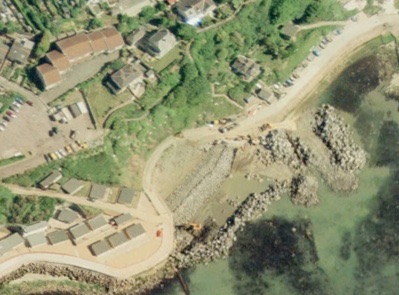
Wheelers bay
Stabilisation Scheme
The top of the cliff in Wheelers Bay suffered a small slip that led to some cracking within Bay House. We were called in to advise. The results from the initial borehole indicated that the cliff may be at risk from a much larger slip. Further boreholes were put down that showed landslipped material to considerable depth. Information from other investigations carried out further inland were collated and the depth of the basal slip calculated at 72m from the assumed slip geometry. A borehole 75m deep was therefore put down in the grounds of Bay Court. In fact the basal slip plane was found at a depth of 69m.
Analyses were undertaken of small slips that would only affect the house at the top of the cliff, larger slips that would affect a block of flats further inland and very large slips affecting the whole area back to the downs. It was found that all three slips were critical but that the medium slip had the lowest factor of safety. Various alternative remedial works were investigated and it was found that the most suitable scheme was one in which the beach was loaded. A scheme was therefore formulated in which the promenade was moved further out to sea and the whole bay infilled. This increased the factor of safety on all the slips, including the major one on the basal slip plane. The possibility of small slips affecting just the crest of the slope was catered for by reducing the angle of the slope and by strengthening the crest with a series of soil nails.
Whilst we carried out all the initial investigations and analyses and were responsible for the geotechnical report and all the geotechnical design of the scheme. The actual contract for infilling the bay was undertaken by others.

Commencement of construction. Promenade shows original shoreline.


During construction

On completion, showing new shoreline